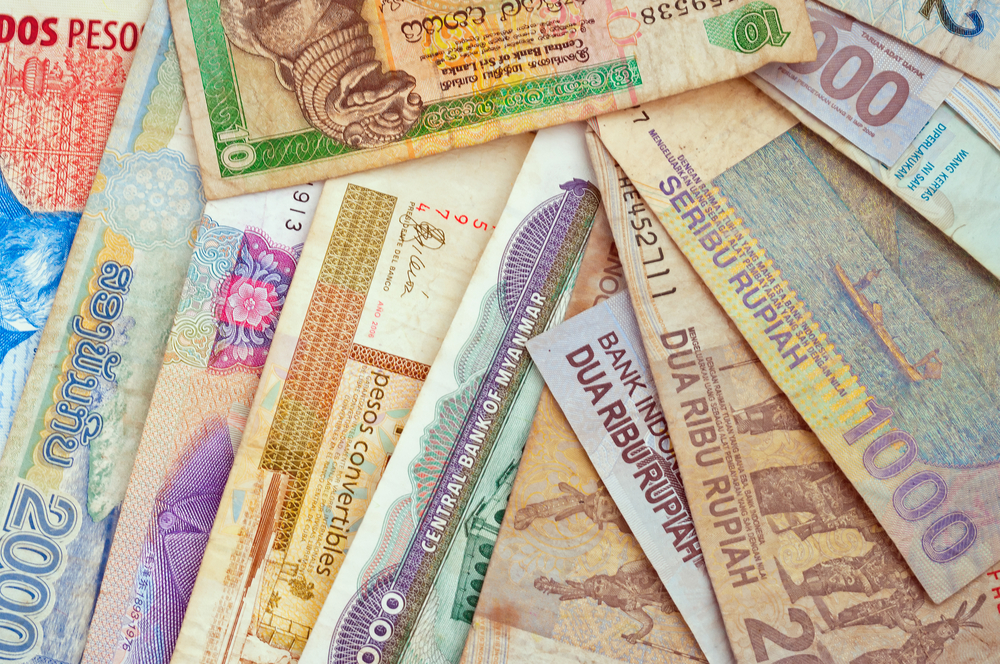With the evolution of financial technology, international money transfers are now easier, faster, and more secure. One thing that hasn’t changed, however, is that these international transfers still come at a steep price.

On top of the transaction fees charged by banks, online payment systems, and other financial institutions, you may also unwittingly pay for hidden fees and charges. These fees can really hurt your pocket, especially if you are a business owner who regularly receives international money transfers from your customers.
Here are the hidden costs of receiving money from overseas customers, as told by The Currency Shop.
Unfavourable exchange rates
Unfavourable exchange rates and commissions built into the currency exchange process form the very essence of a hidden fee. Exchange rates are never the same across the board. Different banks and money transfer services use different currency exchange rates for their international transactions.
When you receive an overseas payment, the customer will send you the money using the currency from their home country while you will receive the money in your country’s currency. This means that the foreign exchange rates at the time of the transaction will determine how much money you will actually receive.
Exchange rates can inflate the cost of international payments because interbank rates include markups, which make overseas transactions more expensive. In fact, a recent study of the top banks in the UK showed that an overwhelming 96 percent of their revenue from money transfer services come from exchange rates.
Here are some essential things to keep in mind when checking out the exchange rates for your money transfer:
- Every bank applies its own exchange rate for an overseas transaction. Pay attention not just to the rate, but also to their currency conversion fee. This fee can be a flat fee or a percentage of the total amount you are expecting to receive
- When banks exchange money with each other, they pay an interbank rate, which is also known as the “real exchange rate.” The exchange rate that you are quoted is the interbank rate plus their conversion fee. This conversion fee usually remains undisclosed and what you get to see is only the rate that you will be using
- Many money transfer services such as PayPal, Bitcoin, and Payoneer often have lower fees compared to banks. However, when you are regularly receiving large sums of money from overseas customers, these can be risky options. For instance, PayPal is known for freezing accounts without warning. Bitcoin, on the other hand, can involve very high transfer fees depending on the currency
The same-day transfer premium
Money transfers from overseas senders that use banks or international wire transfer services generally take between 3 to 5 working days. This lengthy duration may be caused by several factors such as:
- Anti-money laundering checks
- Anti-fraud checks
- Processing time at intermediary banks
- Receipt process at your bank
- Crediting funds to your account (which can take 24 hours or more)
In reality, however, banks can use this window to float your money to earn as much interest as they can. In some countries, this practice goes against government regulation and protections so transfers can be processed faster.
Therefore, in most cases, if you want to avoid this waiting period, you have to pay to speed up the process. If you want to receive an overseas payment within the same day, your customer will have to pay as much as 10 percent of the amount being transferred.
If you are using a digital payment provider, you can cut this same-day transfer fee to as low as 2 percent. This means that if you are receiving money from overseas through a company like TransferWise, you can expect to get the funds faster while also cutting down the hefty fees that banks usually levy on same-day transfers.
SWIFT tracing fee
SWIFT stands for Society for Worldwide Interbank Financial Telecommunication. It is the primary platform or network through which banks from different areas of the globe process money transfers. If you are receiving money online through a bank, the funds are most likely travelling through the SWIFT network.
The SWIFT tracing fee is considered as a hidden cost because most people take for granted the ability to trace their funds through their banks. However, this service comes at a price.
If you want to track the funds that you are expecting to receive from an overseas customer, you’ll need to get a SWIFT code. A SWIFT code is an ID used by banks for international money transfers. You can use this code to request the bank to track the progress of the transaction. This code will also inform you whether the funds are on hold or are already being processed.
Here are some important things to note about using a SWIFT code to trace a transaction:
- SWIFT traces where the money has travelled and its current location
- The SWIFT tracing fee does not cover losses. It is just the fee that you pay when you want to track your money
- A lot of financial experts believe that the SWIFT network is outdated. This means that there is a high risk of transfers getting lost or becoming untraceable, especially because no one monitors the transfer in real time

Unexplained charges
Banks can also impose discretionary fees. The fees typically go unnoticed because the banks seldom disclose them and customers rarely ask about them. Most people just want to get the process over and done with, so they won’t bother asking what the extra fees are for.
These unexplained charges may seem negligible if you are just receiving one or two international payments. However, if you are a business owner with a considerable number of overseas customers, these charges can add up.
It is always a good idea to ask what the other charges are for when you regularly transact with international customers. Some possible explanations are:
- Bank overheads
- Miscellaneous interbank charges
- Receiving or incoming fees for receiving money from international senders
As much as possible, avoid banks and providers that are known for charging fees that are unilaterally imposed or have questionable origins. The goal is to be able to accurately predict that amount of money that you will actually receive, and unexplained charges can make this impossible to do.
How to avoid paying hidden costs
At the crux of every international money transfer is the question: how much is this going to cost? As a business owner, you don’t want to lose money every time you transact with an overseas customer. Here are some essential tips to remember to avoid paying for hidden costs:
Find a reliable and transparent money transfer provider
Make sure that you choose your bank or money transfer provider carefully. On top of their rates, you should also look into their level of service and customer support in case something goes wrong with a transaction.
Below are the crucial factors to keep in mind when choosing a bank or money transfer provider:
Currencies – Remember that just because the bank or provider has a great rate for one type of currency doesn’t mean that it will be just as good for another type of currency. If the majority of your overseas customers use a specific currency, choose a provider that offers the best rate for that particular currency.
Flat fee or rate – Some providers charge flat fees for business transfers, while others charge a percentage of the total amount. Each type has its pros and cons, but the choice will be dependent upon your business needs and requirements.
Transfer speed – If your business depends on being able to receive payments quickly and securely, the speed of international transfers should be one of your top considerations. The standard is 3 to 5 business days for most major currencies. However, depending on the provider, you can cut this down to 24 to 48 hours.
Transfer limits – Many banks and money transfer providers impose a minimum and maximum limit on the amount of money that you can receive. This is a vital factor to keep in mind, especially if you are selling high-value or high-ticket products and services. You don’t want a payment to be cancelled or reversed because you have already reached the maximum limit set by the provider.
Customer Service – Sometimes things can go wrong, even with something as straightforward as a simple money transfer. Make sure that the provider offers reliable and high-quality customer service via various methods, including email, phone, and chat. You want to know that you can talk to a real person, especially when large amounts of money are involved.

Time your transfers
Timing is also critical for overseas payments and money transfers. For instance, it might be more profitable for you to wait for a better exchange rate instead of exchanging your funds right away.
Assess the transaction frequency
In some cases, scheduling a regular payment or aggregating several smaller payments into just one large transaction can help you save a considerable amount of money. If you have regular overseas customers with predictable purchases, this is a great option to consider.
Check the interbank rate
The interbank rate, as discussed above, is the real exchange rate that banks use when transferring money between themselves. It is also referred to as the mid-market rate. In essence, the interbank rate is what your money is actually worth compared to another currency on the global market.
You can use the interbank rate as your baseline when you are comparing the rates of various banks and transfer services. You can check the interbank rate on Google, Reuters, XE, and other reliable sites.
Compare rates
Banks are unlikely to be transparent or forthcoming about the margin that they add to the interbank rate. Before you choose a bank or money transfer provider to accept payments from, make sure that you compare the rates that will be given for your customers.
There are various tools and sites available online to help you compare rates from multiple banks and providers. These online comparison tools and services are often free. You don’t just save money, you also save a lot of time since you can find the perfect fit in a matter of minutes.
Another thing to remember is that the rates imposed by a single bank or provider can vary across different types of accounts. For example, the rates for a personal bank account holder may be different from the rates given to a business bank account holder.
It will definitely be worth your while to take this extra step into getting the most attractive deal before a money transfer is initiated by your customer.
Know where the payment is coming from
Remember that there are certain places in the world where it costs more to transfer money. For example, a study from the World Bank showed that international money transfers in Africa cost approximately 3 percent higher than the global standard.
If you are dealing with a location that is known for the absence or inadequacy of modern banking infrastructure and financial technology, it might cost you more to receive money from your customers in that area. Other factors that can affect the cost of international transfers are the following:
- Amount of remittances
- The country’s participation in global trade
- Other economic factors
Ensure that the volume of money is worth it
Transaction fees greatly depend on the amount of money that you are expecting to receive. Banks and providers generally charge less when the amount is higher. The lower the amount, the higher the fees that you will be on the hook for.
Because of this, make sure that every transaction is worth it. When you accept overseas transfers and payments for small sums of money, you are losing a lot in terms of transaction fees. Aim for higher amounts that will allow you to take advantage of the lower costs being offered by the bank or provider.
Keep in mind that there are some money transfer services that will waive their fees if the transfer volume reaches or exceeds a specific amount.
Conclusion
Receiving money from overseas customers can get really expensive. Customers and business owners alike tend to overlook the fees that come with every transaction. However, you can greatly reduce the fees you have to pay for and increase your revenue by being more careful with choosing your money transfer provider.
More on a small business bank account and dealing with fluctuating currency.


Follow Company Bug